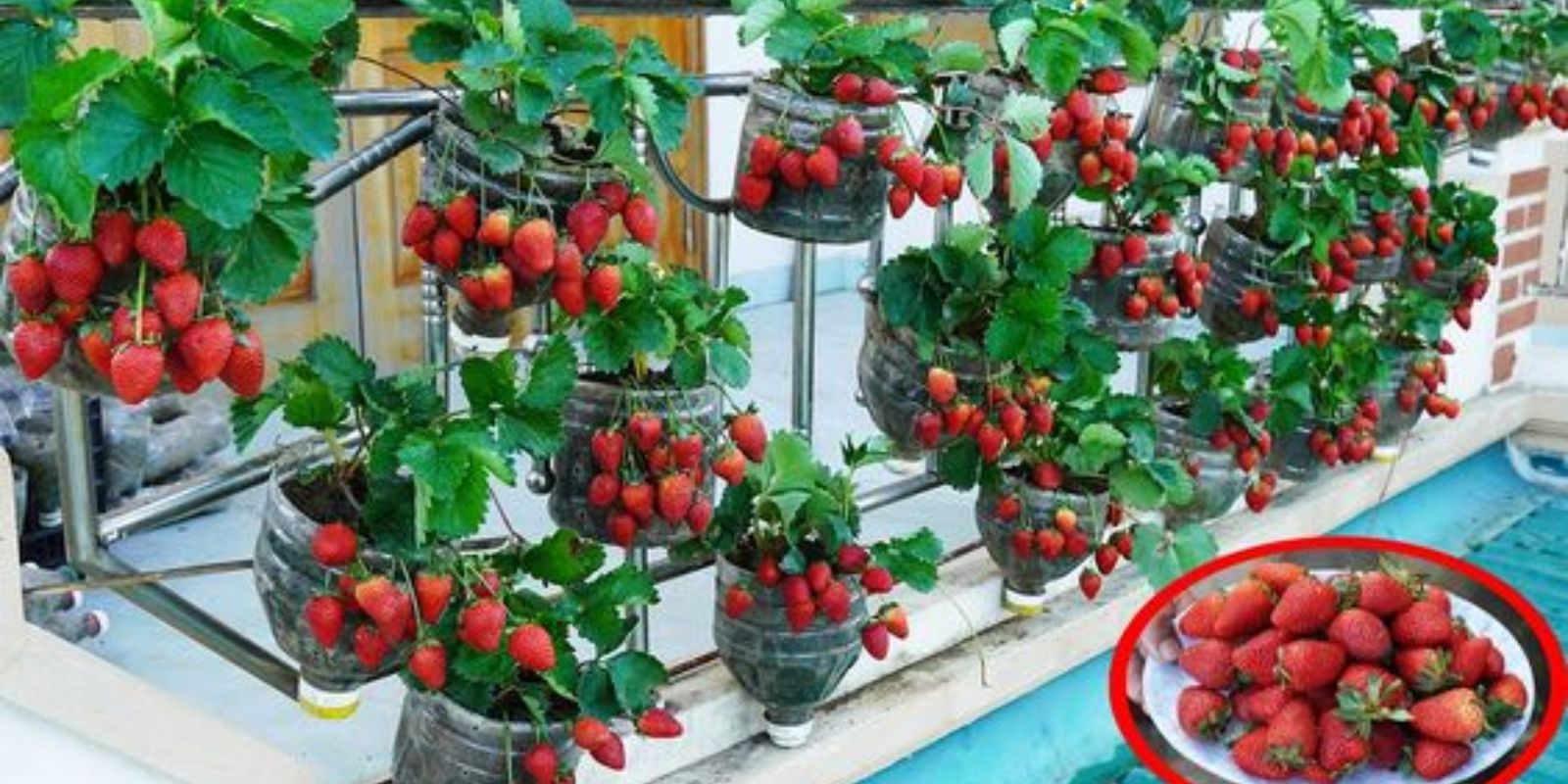Introduction
If you’re looking for a creative and efficient way to grow strawberries at home, using plastic bottles is a fantastic solution. This method is not only environmentally friendly but also ideal for those with limited space. By repurposing plastic bottles, you can create a vertical garden that provides a bountiful harvest of fresh strawberries. In this article, we’ll guide you through the steps to successfully grow strawberries in plastic bottles and share tips for optimizing your results.
Step-by-Step Guide
- Gather Materials To get started, you’ll need the following materials:
- Large plastic bottles (2-3 liters)
- Scissors or a utility knife
- Drill or sharp object for making holes
- Potting mix (a combination of compost, perlite, and peat moss works well)
- Strawberry seedlings or bare-root plants
- Fertilizer (balanced, slow-release)
- Prepare the Bottles Begin by thoroughly cleaning the plastic bottles to remove any residue. Once clean, cut the bottles to prepare them for planting:
- Cut Holes: Using scissors or a utility knife, cut small holes in the sides of the bottle. Space these holes evenly around the bottle, about 4-6 inches apart, depending on the size of the bottle. The holes should be large enough to accommodate the strawberry plants’ roots and allow the plants to grow through.
- Cut the Top: Remove the top part of the bottle. This will serve as the planting area. The bottle’s remaining shape will help support the plants and keep them upright.
- Create Drainage Proper drainage is crucial to prevent waterlogging and root rot. Here’s how to ensure good drainage:
- Puncture Holes: Use a drill or sharp object to create small holes in the bottom of the bottle. These holes will allow excess water to escape and keep the soil from becoming soggy.
- Add Growing Medium Fill the bottle with a well-draining potting mix. A good mix for strawberries includes:
- Compost: Provides essential nutrients and improves soil structure.
- Perlite: Helps with aeration and drainage.
- Peat Moss: Retains moisture without becoming too heavy. Mix these components in equal parts to create a light and airy growing medium. Fill the bottle with this mix, leaving a few inches of space at the top for watering.
- Plant the Strawberries Now it’s time to plant your strawberries:
- Insert Seedlings: Gently insert strawberry seedlings or bare-root plants into the prepared holes. Ensure that the roots are well-covered with soil and that the plant’s crown is level with the surface of the soil.
- Firm the Soil: Lightly press the soil around the plants to remove any air pockets and provide support.
- Water and Fertilize Proper watering and feeding are essential for healthy strawberry plants:
- Watering: Water the plants thoroughly after planting. Keep the soil consistently moist but not waterlogged. Check the moisture level regularly and adjust watering as needed.
- Fertilizing: Apply a balanced, slow-release fertilizer according to the package instructions. Strawberries benefit from regular feeding, especially during the growing season.
- Provide Light and Support Strawberries need plenty of light to thrive:
- Sunlight: Place the bottles in a sunny location where they will receive at least 6-8 hours of direct sunlight daily. If growing indoors or in a shaded area, use grow lights to supplement natural light.
- Support: As the plants grow, they may need additional support. Use stakes or cages to help the plants remain upright and prevent them from sprawling.
- Maintenance and Care Regular maintenance will ensure a successful strawberry harvest:
- Pruning: Remove any dead or damaged leaves to keep the plants healthy. Pinch off any runners that may develop, unless you want to propagate more plants.
- Pest Control: Keep an eye out for pests like aphids or spider mites. Use organic pest control methods if necessary.
- Harvesting Harvesting strawberries is one of the most rewarding parts of growing them:
- Ripeness: Strawberries are ready to harvest when they are fully red and have a sweet aroma. Gently twist or cut the fruit from the plant, leaving the green cap attached.
Motivation
Growing strawberries in plastic bottles is a practical and enjoyable way to cultivate fresh fruit at home. This method allows you to make use of recycled materials while creating a unique and space-saving garden. By following these steps and caring for your plants, you’ll soon be rewarded with delicious, homegrown strawberries. Give it a try, share your results, and inspire others to start their own bottle-based strawberry gardens!
Conclusion
This innovative gardening technique not only makes use of plastic bottles but also provides an excellent solution for growing strawberries in limited spaces. By following the outlined steps, you can successfully cultivate a vibrant and productive strawberry garden. Happy gardening! 🍓🌿

